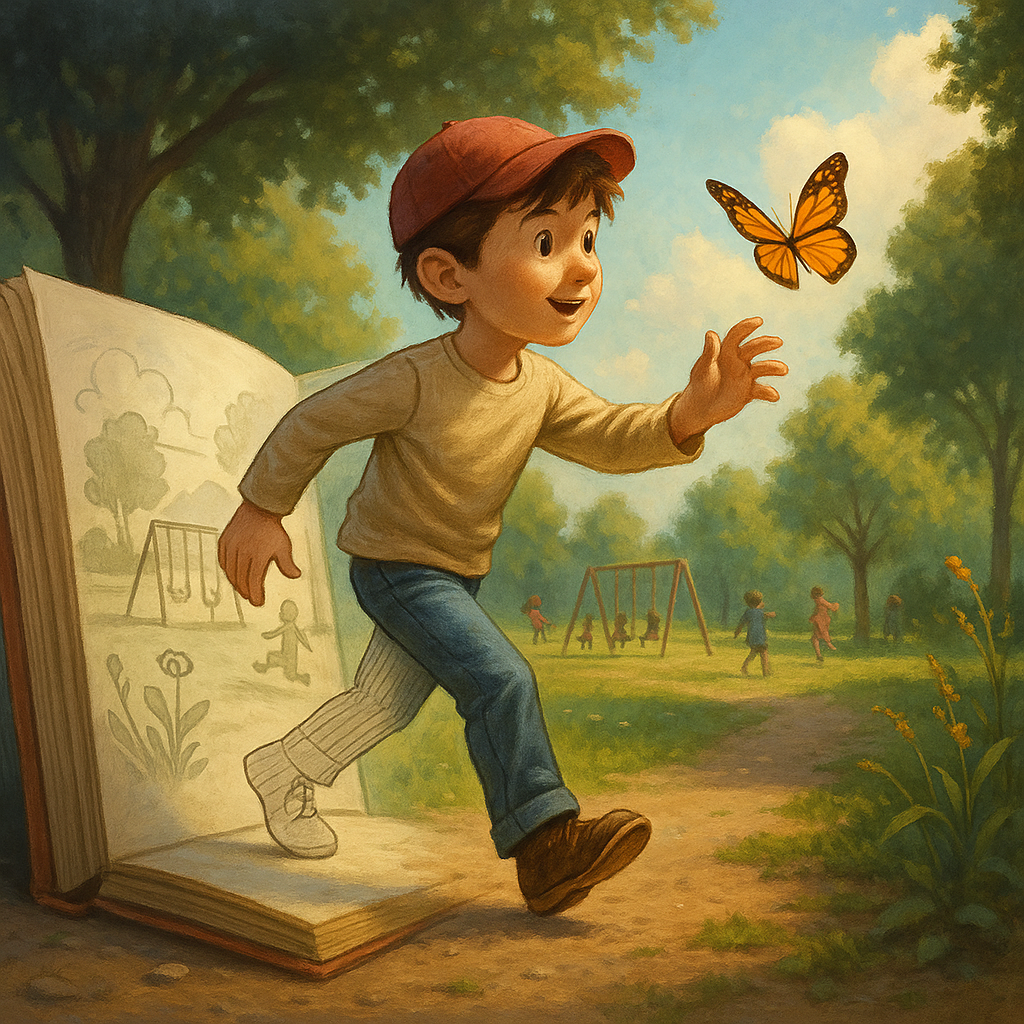
CREATING 3D CHARACTERS… IN A FLAT STANLEY WORLD
Fictional characters come alive on the page when writers go beyond simple physical descriptions. It’s the subtle interplay of memory, emotion, and sensation that transforms a character from a name on paper into a living, breathing presence in the reader’s mind.
Think about how a character’s nervous fidgeting might reflect a childhood insecurity or how a favorite scent could bring back forgotten joy. The most memorable characters are those whose inner lives are as rich and complex as their outward actions—those whose flaws, desires, and sensory experiences significantly influence their choices and reactions. Through these layers, a truly three-dimensional character emerges, inviting readers not just to observe a story but to fully immerse themselves in it.
Now, think about creating three-dimensional characters in your writing. For example, if I am running a few minutes late because my previous meeting is running over, I can add depth by incorporating colors, scents, and all the senses. You want more than a flat, two-dimensional character like Flat Stanley.
Actually, I had never read the children’s book Flat Stanley; however, when one of my grandchildren called and asked if I would please put Flat Stanley on my dashboard so he could see the world as miles flew past us, I agreed. As I mentioned, I had never heard of Flat Stanley. Nonetheless, as any loyal grandmother would, I complied. When I received the picture, I cut around Flat Stanley and stuck him on the car’s dashboard before we backed out of the driveway.
So, who is Flat Stanley? What is Flat Stanley? One benefit of grandchildren attending school is that, over time, grandparents become more knowledgeable and informed about schools, fairy tales, and ideas that adults might have considered throughout the years.
The Flat Stanley Project aims to connect children or classrooms with others by sending out “flat” visitors, created by children, through the mail. Kids discuss, track, and write about their flat character’s journey and adventures.
Okay, enough of a digression.
Just as a page is flat, our characters should not be flat in stories. Readers are more likely to connect with three-dimensional characters.
Carl Jung said honest writing cannot be separated from the writer. Therefore, writers must immerse themselves in the story. If you try to create a new character who isn’t you (or part of you), the character will feel flat.
Character is the most vital element in our story. Characters go beyond plot, conflict, and structure. A well-developed character makes the reader want to keep reading because they will identify with that character. If the reader can’t relate to the character, interest is lost.
Conflict should arise from the character itself. Their desires and longings express their emotions, and it is from this that conflict develops.
Writers: your character can’t have unresolved goals and expect the reader to stay engaged.
Throughout the story, the reader uncovers the character’s goals. As writers, we need to clearly communicate those goals at the beginning.
You learn about your character by exploring yourself (since you are the character, or at least part of you is).
Believable motivation comes from the character’s emotions and backstory.
Characters we create have yearnings. We need to describe their sensory experiences to convey their emotions. We must identify their feelings, especially the emotions they experience. To do that, we need to tap into the senses.
Our characters are no different from us. We bring them to life and act on their yearnings just as we would.
When developing characters, we need to know what they like. What smells turn them off? We need to flesh them out. When they smell something, what emotion does that evoke? Do they want that emotion or not? The power of senses adds richness to scenes. This helps your reader see, hear, smell, and taste.
We draw on our own experiences to enrich our characters.
We should use these experiences subtly—it’s the iceberg principle. We see only about 10 percent above the water, but 90 percent remains beneath. You don’t have to include all of it, but as a writer, it’s essential to be familiar with it.
Create a list of features about your character and their emotions. Emotions include surprise, fear, anger, sadness, disgust, happiness, and contentment. Your POV character needs to experience all of these.
You must have your character go through all these emotions. This will help you understand their temperament. Our characters should experience the world just as we do.
Take your time to craft the scene. Say the kitchen is hot without explicitly stating it. How might you do that?
a.
b.
c.
Writing is sensory; include details.
-
Describe what your character sees, and what they feel about what they see.
-
They see the cake but also sense how badly they want it.
-
What’s the color of the room? Is it cold or warm?
-
Do they smell something?
-
Is it pleasant or unpleasant?
-
What do they see and hear? (If you don’t describe it, your readers won’t either.)
Tap into your own emotions and bring your readers there.
We don’t use smell and color enough in our descriptions.
Color influences us.
-
Red stimulates and warns us. Seeing red raises blood pressure and heartbeat.
-
Yellow is stimulating, stubborn, and sometimes hostile. It can also improve recall.
-
Green is calming.
-
Orange makes us hungry.
By using our childhood experiences, we can face our shadow side and incorporate it into our character, allowing the character to work through it, which leads to personal growth and healing.
How about that? Writing is therapy.







